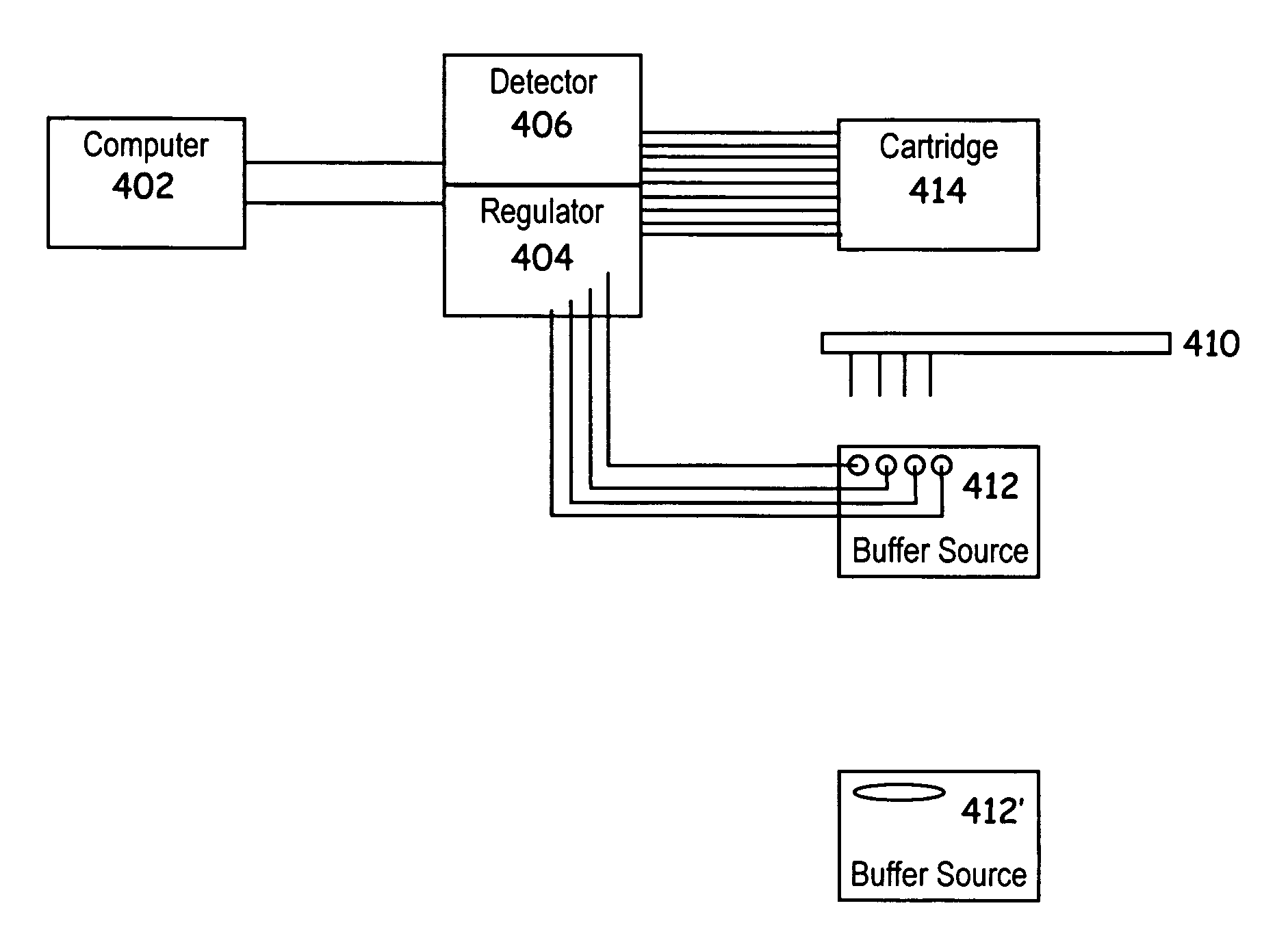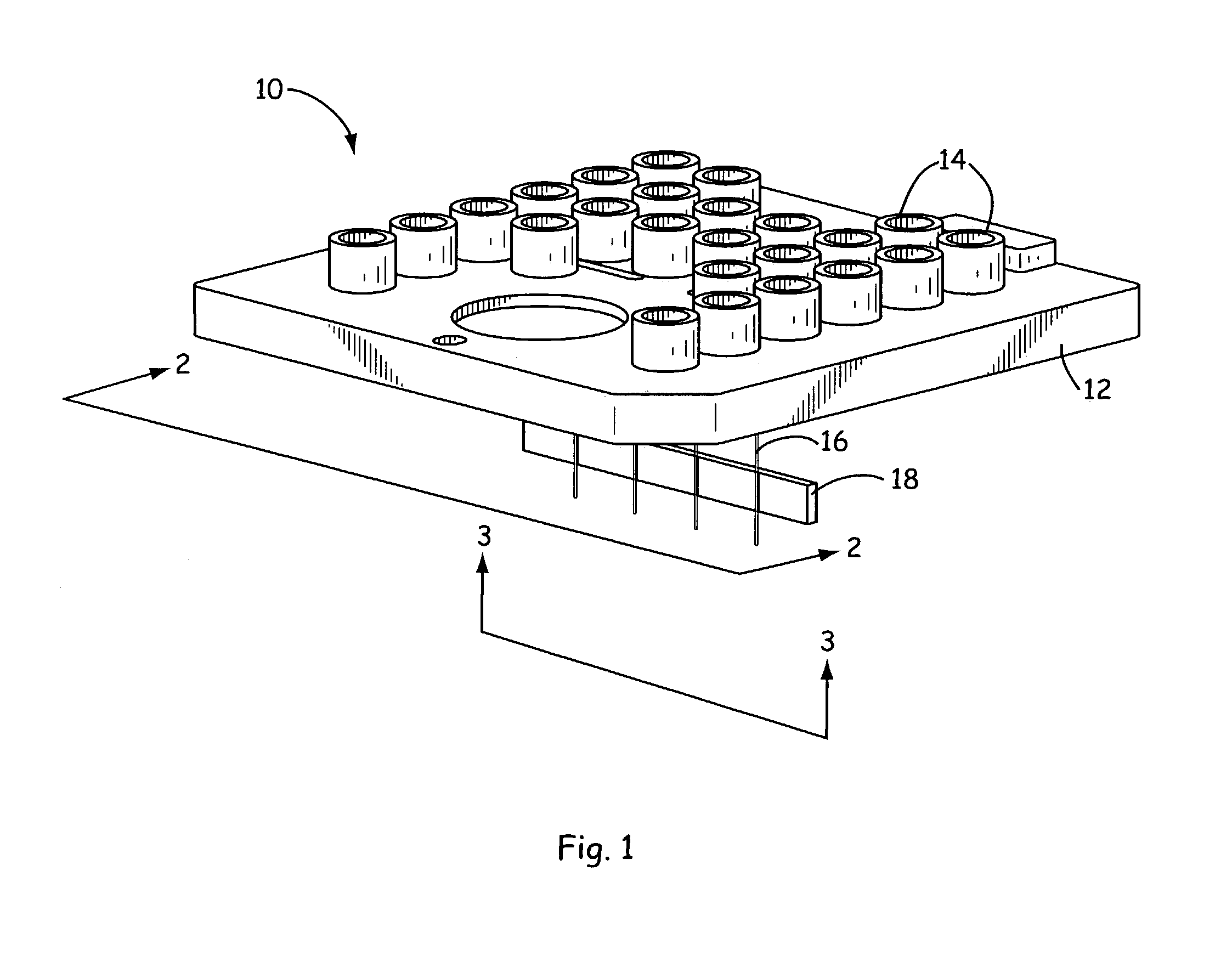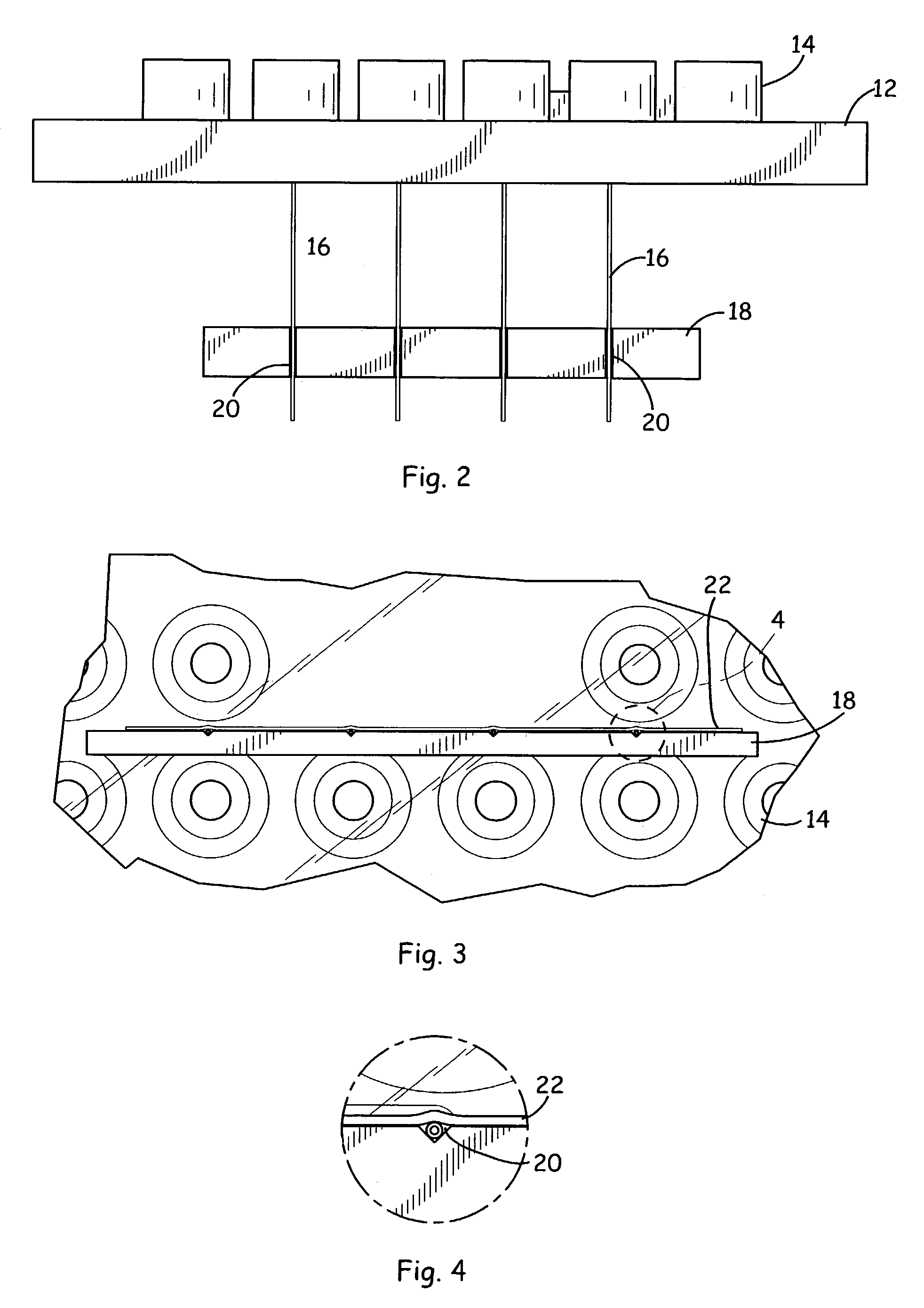Voltage/current testing equipment for microfluidic devices
a technology of voltage/current testing and microfluidic devices, which is applied in the direction of instruments, separation processes, glassware laboratories, etc., can solve the problems of affecting the accuracy of microfluidic devices
- Summary
- Abstract
- Description
- Claims
- Application Information
AI Technical Summary
Benefits of technology
Problems solved by technology
Method used
Image
Examples
Embodiment Construction
[0023]The methods and devices of the invention directly address and solve concerns associated with testing the proper function of microfluidic channels and devices. Specifically, the invention provides methods for determining whether the various microfluidic channel or capillary elements in a microfluidic device are blocked (e.g., by incomplete etching of a microchannel, presence of an air bubble, etc.).
[0024]Briefly, the methods and devices of the current invention involve the testing of microfluidic devices in order to detect bubbles trapped within the microfluidic channels and / or blocked elements, misplaced patterns of elements, etc. As explained in more detail below, devices herein set known voltages and / or currents at two or more various fluidic openings (e.g., open wells or reservoirs at the ends of microchannels, fluidic openings at the ends of capillary elements, etc.) of microfluidic devices. The resulting voltages / currents measured at a third fluidic opening which is fluid...
PUM
| Property | Measurement | Unit |
|---|---|---|
| width | aaaaa | aaaaa |
| width | aaaaa | aaaaa |
| pH | aaaaa | aaaaa |
Abstract
Description
Claims
Application Information
 Login to View More
Login to View More - R&D
- Intellectual Property
- Life Sciences
- Materials
- Tech Scout
- Unparalleled Data Quality
- Higher Quality Content
- 60% Fewer Hallucinations
Browse by: Latest US Patents, China's latest patents, Technical Efficacy Thesaurus, Application Domain, Technology Topic, Popular Technical Reports.
© 2025 PatSnap. All rights reserved.Legal|Privacy policy|Modern Slavery Act Transparency Statement|Sitemap|About US| Contact US: help@patsnap.com



